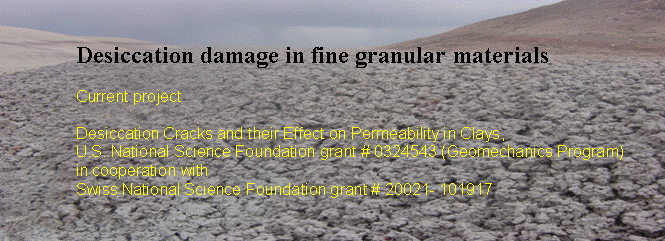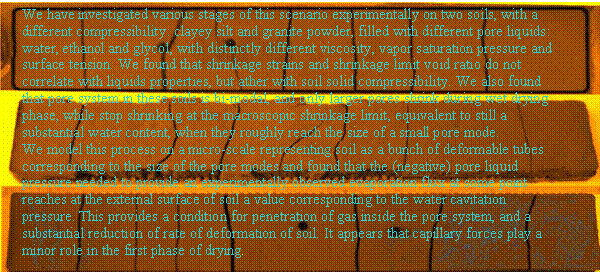





TH LBH LL HP

Dessication damage and cracks in soils are a crucial issue in geotechnical engineering due to the ensuing degradation of many soil properties. Desiccation cracks may appear in clay barriers such as landfill liners, top covers and buffers for nuclear waste isolation and strongly affect their permeability and compressibility. Desiccation is a continuous loss of pore water via evaporation from a soil exposed to drier and/or warmer environment. In an initially saturated soil in the first phase soil remains completely wet. In response to water volume decrease during drying, the soil shrinks. A limiting strain can be identified (equivalent to an empirically determined water content of shrinkage limit) occurring still in the completely saturated soil. Shortly afterwards, air invades the soil pore space, and if soil is kinematically constrained, crack appears due to tensile stress induced by the constraints, when the stress reaches the tensile strength.

LBH in Soil Mechanics Lab, EPFL